We’re honored to have been invited to speak at this year’s Inbox Expo.
The conference brings together companies and individuals from all over the world to speak about email delivery and related technologies. Teresa, one of our Customer Success Engineers, discussed “List-collection methods and best practices”, and Louise presented “The Email’s Your Oyster. The Customer’s Your Pearl.”
Louise’s presentation looked at our approach to humanizing customer support rather than leaning towards automation and AI, and the benefit that it has for us as a company, as well as for our customers.
The event was really interesting and it was an incredible opportunity to learn from some of the world’s leading experts in the industry. It was great to get feedback on our presentation too and to see what people thought about the way that we do things. One of the concepts that a lot of people seemed to appreciate was our suggestion to remove noreply email addresses, in order to open up a two-way conversation with customers.
The @NetcoreSolution #inboxexpo with ☘️Louise Feaheny @smtp2go “🚫no-reply: we need to make conversations easy”https://t.co/0ru4AQ24sJ pic.twitter.com/vj7dTRaiWV
— EU made email marketing & survey platform. (@sensorpro) March 23, 2021
My personal favorite has to have been Harry Potter and the Deliverability Conundrum by Yanna-Tory Aspraki. She went through how to apply delivery concepts to real-life scenarios. I loved how she delivered the concepts and it almost felt like sitting down to have a chat with a friend rather than a stuffy presentation.
We’ve trimmed down our video to include the best bits, so you can see it right here. Enjoy!
Welcome to SMTP2GO
Hi! Thanks for joining me today. I’m going to be speaking about the email being your oyster, but the customer being your pearl. The benefits of humanizing your customer support. My name’s Louise, and I’m a Customer Success Engineer at SMTP2GO.
We’re a dedicated SMTP provider headquartered in Christchurch, New Zealand. Our office is located in the EPIC Center, but the majority of our team works remotely as we’re based across the globe. When the world went into lockdown last year, it meant that nothing changed for us. We were able to continue to offer the same great service as always, without having to compromise in any way.
I want to take this opportunity today to speak about the importance of humanizing customer support for us. While the world is aiming for AI, we’re going in the opposite direction. We believe customer success comes from our customer success agents. You can spend all the money in the world on marketing, but we believe that first impressions really count, so when a customer gets in touch with us, we want to get it right.
MEET THE TEAM
First things first, I’d like to introduce you to our team. In New Zealand, you’ll find our head of support, Lukas. Lukas has been around since the beginning, so he really does know the company inside and out. Rick is also a Kiwi, but just before lockdown commenced, he was in Australia and it doesn’t look like he’ll be coming home any time soon. Rick’s been with the company for 4 years.
If you hop on a flight (Covid-permitting!) you can visit our EU support team. Charlotte is based in London, and she’s been with the company for 7 years. She’s one of the OG’s. As well as speaking English, she also speaks Spanish and French as she’s lived in France and Barcelona for quite a few years. I’m Lou! I’m Irish but I’ve been living in Madrid, Spain for 8 years. I’ve been with the team for 6 years, and also offer support in English y en español. Teresa is also based in Madrid. She’s been with us for 5 years, and she also offers support in English and Spanish and she’s learning Italian too. James is based in bonny Scotland and he joined us 3 years ago. Although he’s on the EU team, he works evenings, whereas Charlotte, Teresa, and I do the morning and day shifts. James is currently working on a Master’s, so the schedule works better for him that way and there’s a nice transition for us while one time-zone working day ends, and another begins.
As we finish our shifts, our US colleagues come online. Dominique has been with us for 6 years as well, and Jenn is the newbie, but even at that, she’s been working with us for 2 years.
Size Does Matter!
Our support team is small and we’ve all been with the company for a long time. Since the company was established, only three support staff have left, all for a different career. This stability, consistency, and low turnover means that whenever someone gets in touch, they know exactly who they’ll be speaking to. This means not having to explain the same situation to various support staff, multiple times. We’re really good at note-taking too, so even if someone was speaking to someone in the morning, and they get back to us in the evening, we make sure that we leave detailed notes, to make things easier for the customer.
We offer support around the clock, and by hiring people in different time zones, it means that no one is working through the night, so grumpiness is less of an issue- most of the time. In terms of internal communication, we like to keep things simple. We primarily use Skype for day-to-day stuff. We’ve got different channels, so a general one for chat, then separate ones for each local team, a separate one for important notifications, and another one specific to our review team. For more company-wide communication, we use Slack. Again, we have it divided into separate channels for different topics. If we need to ask our developers a question, we have a direct way of contacting them, and we don’t need to escalate tickets before they reach them. We also use Asana for delegating tasks, and for suggesting features or highlighting issues. We have a dedicated channel to escalating customer suggestions to our developers and they run through them while designing every update. A lot of our features have been influenced by our client’s requests, and we’re constantly adapting to their needs.
What Makes Our Support Team Different?
Every response that we give is tailored to the individual customer.
We don’t use canned responses and automatic replies. They’re frustrating and waste our time as well as the customers’. When a client, or a potential client gets in touch, we want to reply to them as soon as possible, in order to keep them engaged with us. If a potential client has to wait two days for a response, they’re going to look somewhere else. If a customer needs to go two days without getting a resolution to their issues when sending emails, they’ll go somewhere else.
Let’s Take a Look at Our Response Times From 2020
For a lot of companies, Covid was an excuse for poor customer service. We dealt with a lot of frustrated customers who came to us expecting the same, and were pleasantly surprised when they got to speak to a real person, in a short amount of time.
We use Intercom for sales chats, and any queries that someone might have on our website, without needing to log into their account. Our median first response time was 34 seconds, and the median time to close was 18 minutes 34 seconds. The median response time in general was 31 seconds. We use Zendesk for emails, tickets and logged-in support chats. Our first reply time median was 7 minutes and 35% of tickets had a one-touch resolution. 18% were resolved in 2 touches, 16% in 3-5 touches and only 5% required more than 5 responses.
Phonebots. Who Do They Really Help?
Ok, so let’s forget about the customer service side of things for a moment. How often have you yourself been stuck on hold repeating your name over and over again, pleading with a robot to understand you? Or how often have you waited patiently as the automated recording reads out “Please press 29 if you can’t remember why you called anymore?”
My surname is Feaheny. F-E-A-H-E-N-Y. That’s difficult enough for an English speaker. My first name is Louise. I live in Spain, where Luis is a man’s name. I’ve never once had a positive outcome with a phonebot here.
“No. Lau-eazy Fay-a-henni”.
Imagine how frustrating it must be for someone even speaking the same language with a strong accent. We’re completely isolating customers who may have a different mother tongue. If anyone has seen the video “Voice Recognition Lift” from Burnistoun on YouTube, you’ll understand exactly what I mean. If you don’t remember it, all I’m going to say is “Eleven”.
This is how I feel every time I speak to a phone bot! Even language and accents aside, the other day I had a really simple question for my internet provider. They used to have fantastic phone service, so I called them up. Unfortunately, it now seems to be impossible to speak to a real-life human being. By the time they had gone through my billing history for the month, account details, and all the options to choose from, I had been on the phone for 5 minutes and none of the options were what I was looking for. I tried choosing random numbers, just to see if I could get transferred to an agent, and eventually, the call just disconnected. I still haven’t got an answer to my question, but I got so frustrated that I just gave up.
Oysters Are Nice
But really, what we want is the pearl.
When looking at email delivery, what is our ultimate goal?
Getting your emails delivered is one thing. Yes, it’s obviously important and of course, we want reliable delivery- but what good is a one-way conversation if our customers have a query? When we use no-reply emails, we’re shutting off that channel. In order to optimize sales, we need to make conversations easy. If our customer wants to reach us, we need to be reachable.
If we put too many barriers in the way of a potential customer, they’ll go somewhere else.
What Are the Hallmarks of an Effective Support Team?
The first thing is communication. Internal and external.
Working in different countries and time zones should make communication a challenge, but it’s not when it’s done right. By using the different communication channels that I mentioned before, it ensures that when someone needs some information, it’s there, it’s easy to find and it can’t be missed.
I want to talk to you about my own personal experience. A few years ago, I took maternity leave when my little girl was born. The day I returned, I logged into Skype, and there were so many messages to load, the program kept crashing. The thing is, it didn’t matter. I knew that the thousands of chats were just that- chats. I knew where to look for the important stuff, and in about half an hour, I was back up to speed, despite having been gone during some big updates and changes.
Our support staff aren’t all from tech backgrounds. We believe that the ability to research and learn on the job is more important than the knowledge that we started with. We’re in an industry that changes on a day-to-day basis, so being able to find the information that you need is much more important than knowing a limited amount. It’s like which is more beneficial? Reading a book and knowing it word-for-word, or having access to a library where you know where to find everything.
We often have customers who get in touch with us because they can’t send an email, but the issue isn’t with their SMTP2GO account. Even though they might be having problems with a different program, we’ll help to point them in the right direction, rather than just saying, “It’s not our problem.” We’re extremely strict on spelling, grammar, and punctuation too. Attention to detail in our job is crucial as one typo in code can throw the whole thing out the window. We are experts in scanning through a blurry photo of someone’s computer screen taken on an old camera phone in order to find a mistake.
We also need to take into consideration that not every client works in tech. We have clients who know the industry as well as we do, and we’ve got 90-year-olds who just want to send an email to their grandchildren. No matter who we’re speaking to, we need to be able to adapt our language to their level of comprehension. This is crucial. Not everyone understands CNAME and DNS records, or what DKIM or SPF stand for. We need to be able to break all of these details down in a way that is comprehensible to the client.
The next thing I want to look at is the importance of the tools that we use. In terms of communication with our clients, we prefer multi-channel support. Some people prefer to chat, others prefer email, and some prefer a good old-fashioned phone call. All of our staff cover multiple channels, so if I’m speaking to someone on the phone who needs to send a screenshot, I can access it immediately without having to rely on a colleague to forward it to me. By using multiple channels, like emails, Zendesk, Intercom, and Talkdesk, it means that in the off-chance of one of the platforms needing an update or something, our customers still have a way to reach us, no matter what day or time it is, and no matter where they are in the world.
Our support team offers pre-sign-up support, onboarding help, and also continued assistance and troubleshooting to already established clients. It means that there is continuity for clients, and they don’t have to re-explain themselves multiple times over the same issue. It’s rare that a query needs to be escalated, but when it is, we contact the developers directly, and the same person gets back to the client. In some cases, if a ticket needs to be escalated to Lukas, our supervisor, we’ll speak to Lukas directly about the issue to make sure that the client doesn’t need to repeat themself.
Next, I want to talk about caring. Your support staff has to care about their job and their customers. If they don’t, it shows. Empathy is crucial in this position, and we place more of an emphasis on this in our interview process than on previous experience. You can teach our business, but you can’t teach empathy. You can follow guidelines but if you don’t care, the customer can see that.
However, it’s not just about caring for the customers. If you don’t care for your team, they won’t care about the customers. We’ve all stuck with SMTP2GO for so long because it’s a great company to work for. Our voices feel heard, and we’re given the support and opportunity to expand our job positions into other areas that might interest us. For example, that’s why I’m talking to you today! I also recently started a YouTube channel for the company. Our other team members who had an interest in webinars, podcasts, social media, and blog writing have also gotten involved in these areas. By allowing us to work in other areas that we are interested in, it helps to change things up so it’s not the same work all day every day. We take turns focusing on content creation days, and we focus on support on the other days of the week. Talk to your employees, see what they’re interested in, and give them an opportunity to get involved in something new.
At SMTP2GO we also feel valued, there are bonuses for longevity with the company, and each month we get additional bonuses in the form of Qarrot points that can be converted into vouchers. We don’t have a separate sales and support team, but if we follow through on an initial query that signs up for a paid plan, then we get commission on that contact. For every single plan that signs up, whether they went through a support agent or not, a percentage of commission is also randomly allocated to a team member, so if there’s a month with more sign-ups, then we all benefit from it- and if we’re happy, the customer’s happy!
Online Reviews- The New Word of Mouth in a Global Village
In the past, people would try before they’d buy. In a fast-paced digital world, it’s not always possible, so we look to reviews to see if a product or a service is trustworthy.
If you take a look at Capterra, G2, or TrustPilot, you’ll see that the majority of the reviews for SMTP2GO reference our customer support. In the last few months, a lot of our clients have migrated from another competitor after they changed their way of handling things, and customers were often left without responses for weeks on end, or else were given unsatisfactory replies. They got in touch with us, expecting the same, and were pleasantly surprised when they got immediate results.
So, to sum up. We see the benefits daily of having a human-centered approach to support. While the world is going digital, sometimes we just need a little human contact.
Thanks so much for listening, and if you have doubts or questions, we’re here to help.






